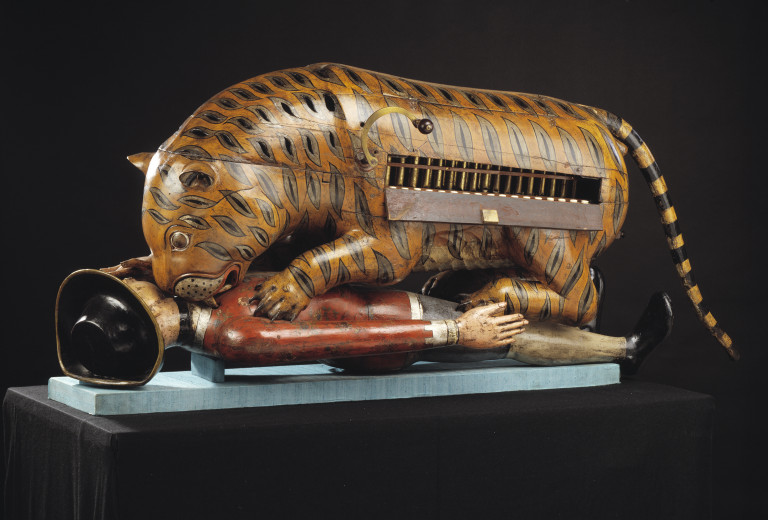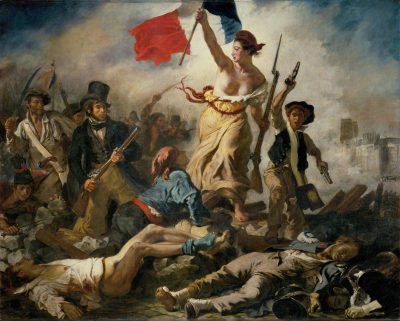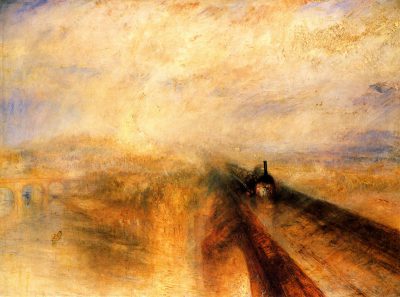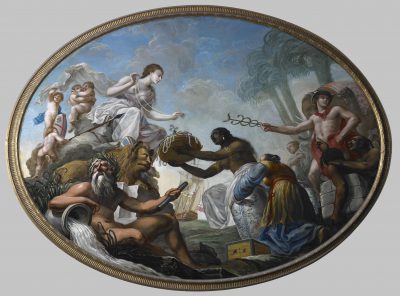The Modern World 1750–1914 CE
Victoria and Albert Museum Spotlight Object
Tipu’s Tiger

Kingdom of Mysore, India
1782–99
Musical mechanism, carved and painted wood
71.2 × 172 cm
2545(IS)
Credit: © Victoria and Albert Museum, London | Non-commercial use
Tipu’s Tiger is a near life-size wooden semi-automaton and musical mechanism, carved and painted to depict a tiger mangling a European, possibly British, soldier. This work was made for Tipu Sultan, the ruler of Mysore in India (1782–1799). The tiger’s body contains an organ with eighteen pipes, which when played mimics the cries of a dying man and lifts his arms up and down. The Tiger was found by British soldiers in the palace of Tipu Sultan’s capital after the 1799 Siege of Seringapatam, where Tipu, his soldiers, and many civilians were slaughtered. Looting ensued and the spoils divided among the British army; Tipu’s Tiger was shipped to the East India House in London in 1800, and later transferred to the Victoria and Albert Museum (then known as the South Kensington Museum). Since its arrival in London, it has remained a popular tourist attraction.
Artemis Tzioli
Art History Program, VCUarts Qatar
The Big Picture
Although the Ottoman Empire had reached its height of power, accumulated minor failures began to take a toll. As Western powers strengthened their imperial potential through colonization and industrialization, Ottoman efforts to expand westward failed. The outcome of the Austro-Turkish War of 1788–1791 put an abrupt halt to Ottoman expansion and marked the beginning of the decline of the Ottoman Empire. In the early 1800s, the Greeks, Bulgarians, and Serbs began seeking independence, while British intervention extended into increasingly unstable Ottoman colonies, such as the Eyalet of Egypt and Ottoman Syria. Faced with the advanced military and technological superiorities of the West, the Ottomans began to modernize, but failures in economic and political reform still led to an increased dependency on the Western empires, and a few decades later, the disintegration of the Ottoman Empire (1828–1908).
In Europe, the Industrial Revolution kickstarted in 1760, coming to an end by the 1830s, and spurred the development of machinery and manufacture, allowing for gains in military and industrial production. Britain, France, Germany, and other smaller states became producers and manufacturers, exporting products based on resources imported from their colonies. These colonies with their massive labor force also helped spur the Industrial Revolution. While China did not follow Europe in industrializing, it maintained its agricultural economy and traded heavily with the European powers. Trade companies such as the East India Company subjugated India, amounting for half of the world’s trade. Beyond its economic and royal presence, British military and administration controlled the subcontinent as well, forming the heart of the British Empire.
Due to Europe’s industrialization, modern information technologies like the printing press flourished, and the world’s first photograph was taken in 1826, revolutionizing methods of historical recording. Old systems of governance, such as feudalism, aristocracy, and church authority, began to crumble from their foundations as the common people sought to reform sociopolitical and economic structures, and to gain rights and freedoms. This resulted in a wave of what were known as the Atlantic Revolutions across Western Europe, the Americas, and British-territory islands in the Atlantic, surging in the eighteenth and early nineteenth centuries with a fight for the ideals of republicanism and the Rights of Man.
Artemis Tzioli
Art History Program, VCUarts Qatar
In Focus

Atlantic Revolutions
Louvre Museum, Paris
The American Declaration of Independence was signed in 1776, and the Constitution in 1787. This revolutionary decision, which emancipated the United States from British control, triggered a wave of revolutions—what would come to be known as the Atlantic Revolutions—over the next 60 years.
More
The Industrial Revolution
National Gallery, London
The eighteenth century saw the revolution of the mind, which became the foundation for the Atlantic Revolutions. However, another revolution also triggered one of the greatest turning points in modern history: the Industrial Revolution.
More
Colonial Encounters: British Empire and Others
British Library, London
Colonialism began as a practice of imperialism in the fifteenth century, as the Spanish and Portuguese expanded their dominion across the globe during the Age of Exploration.
More


